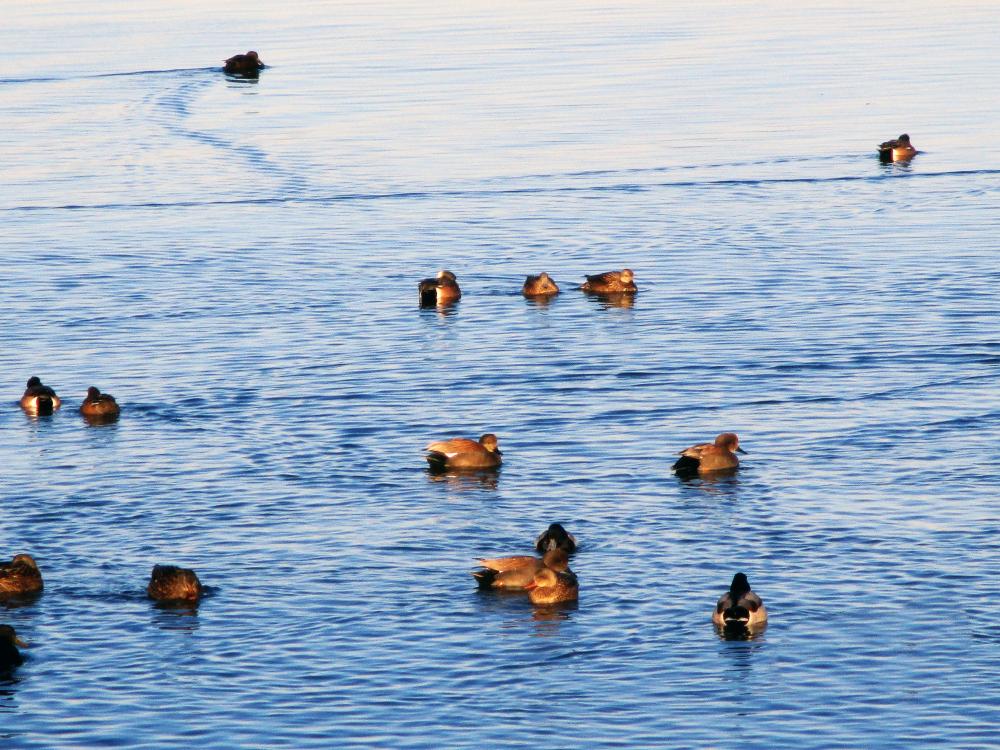In just the past five years, for the early December survey alone, conditions and results have been highly variable. Tides have ranged from moderate to high “super moon” levels, temperatures from seasonable to balmy, ice levels from absent to extensive, and waterfowl numbers at record highs and lows. Although ice coverage is generally lower in December, two weather postponements increased the likelihood of colder temperatures and higher abundance.
Calm conditions and ice-free systems in 2017 were optimal for spotting Buffleheads and American Black Ducks, which are common in shallow coves, and waterfowl numbers were the highest in a decade. In 2018, a postponement increased ice levels and Canada Goose numbers, along with the familiar dabblers, American Black Duck and Mallard species, were driven from frozen freshwater ponds. Although ice limited divers which often dwell far offshore, Hooded Mergansers showed high densities in ice-free sections of larger ponds as a species increasing locally due to nest box use. In 2019, ice and temperature levels moderated, with many geese feeding in nearby fields and waterfowl numbers declining. However, Canvasbacks, a species suffering severe declines over time, were spotted in a coastal pond that year. That year, both Gadwall and American Widgeon, two dabblers becoming more common, showed increases. In 2020, another postponement occurred but balmy temperatures which decreased ice in the region caused the lowest waterfowl levels in many years. Divers however, increased due to available open water in coastal systems. Then in 2021 (last December), another high moon tide kept estuarine diver numbers down, but dabblers increased, cooler temperatures boosting numbers. Divers were relatively abundant in ponds however, which are less subject to tidal fluctuation, with a large Ruddy Duck flock and a Tufted Duck, a particularly rare bird, both seen. Canada Geese numbers were extremely low due in part to lack of snow cover in the nearby fields, offsetting the increase in other waterfowl caused by the cooler temperatures.
This small snapshot depicts how waterfowl adapt to, and how numbers vary with, environmental conditions such as tides and ice, which species appear to be on the increase, and what rarities have been present. This five-year look also hints at climate change with warm conditions in December. Continuing this survey, running over three decades, allows more thorough answers to many questions regarding this important natural resource. Stay tuned for count results and check our Winter Waterfowl link for a clearer picture of long-term trends.
by Jamie Bogart, Lloyd Center Research Associate















